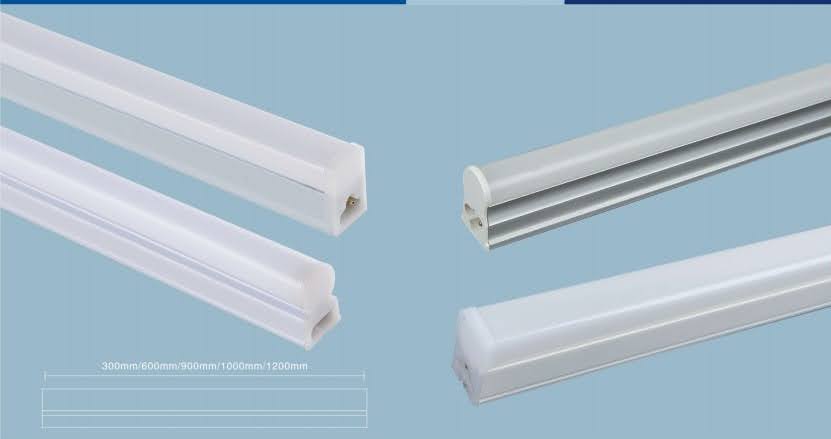
Which types of lights should I use for growing microgreens? Everything you need to know
Share
We've explored the optimal lighting solutions for cultivating microgreens and delved into various methods of growing them. Initially, when cultivating microgreens solely for personal consumption, natural daylight from a windowsill or any area with direct sunlight may suffice. However, the choice ultimately depends on personal preferences. While it is an option, especially for those who enjoy having a well-lit mini garden indoors, we've tested and developed various home automated and non-automated mini gardens for your consideration. We hope that you'll find valuable insights in this post.
That being said, as you immerse yourself in the world of microgreens on a larger scale, especially as a grower, the consideration of lighting becomes pivotal in indoor cultivation. While I wouldn't claim it to be the single most crucial factor, it undeniably holds significant importance.
Reflecting on our own journey, when we initially ventured into growing and experimented with different lights, we acquired both full spectrum and white lights as well as household ones from IKEA. Despite encountering LED lights in the store, we had never heard of T5 or any mention of the light spectrum or color, so at the start we thought any LED light would do the trick with the added bonus of using less energy. Eventually, we came across the literature that involved microgreens, lighting, and correlation with nutrients and antioxidants. 

In combination we needed to see what our new market in the Netherlands had available. However, upon testing, we found that the full spectrum regular lights yielded satisfactory results comparable to the white LED lights. There was no noticeable difference in growth or harvest yield; rather the difference was in price difference between lights – the latter being twice as expensive. I'll delve further into this topic later in this post.

When should I expose microgreens to light?
Initially, it's essential to cover your seeds during the germination phase, and our preferred method involves covering them with another tray, though alternative methods can also be used. This step is crucial to prevent moisture from escaping. The duration of the germination phase varies, with faster varieties completing this stage in just a few days, while certain herbs may require a more extended period in the dark. To assist you in determining the right time to introduce microgreens to light, we've compiled a table featuring 20 of the most common varieties (see below).
As a general guideline, when seedlings reach approximately 2-3 cm in height during the dark phase, which is typically between 2 - 3 days they are ready to be exposed to light (other seed types vary in germination rate in days, e.g. parsley 7-10 days).
How many hours of light do microgreens need?
Plants, much like humans, require periods of rest. To mimic the natural daylight cycle, we employ a method where lights are on as long as it is daylight, and they turn off when darkness approaches. To simplify this daily cycle, an electric timer or smart plug is a convenient aid, which you can automatically change via your smart phone. In our setup, we use a model similar to the one depicted, tailored to meet our specific requirements, which we recommend via the following: smart plug link.
This smart plug allows you modify your lighting at any time and any place as well as shows you your electricity use. You also have the flexibility to choose any electric timer that suits your preferences. On average, we keep the lights on for at least 6 to 8 hours when we are on solar energy for example. However, if your supply of electricity is not an issue then the more the better just make sure your microgreens get shut eye. A study was done on the correlation between hours of LEDs lights on microgreens. they concluded that the more light that microgreens received the higher in macro and micro nutrients.
I recommend skimming through the research from this article:
https://www.researchgate.net/publication/277075083_The_effect_of_light-emitting_diodes_LEDs_photoperiod_on_nutritional_quality_of_Brassicaceae_microgreens
What are the differences between LED lights?
Let me begin by elucidating the various parameters related to light and the specific requirements microgreens have. Similar to other plants, microgreens rely on light for photosynthesis. Without adequate light, microgreens may exhibit a yellow hue, which not only affects their performance but also alters their taste, rendering them sweeter compared to those rich in chlorophyll.
The designations T5 (0.6"), T8 (1"), or T12 (1.5") refer to the tubular diameter of the light tube. T5 & T8 LED lights, with a length of 90 to 120 cm are the most commonly utilized type today.
Lumens serve as a measure of how bright a light appears to the human eye, but it does not necessarily indicate how effectively a LED light can foster plant growth. The strength or intensity of the light is more accurately assessed by the total wattage, where a higher wattage implies greater intensity.
Kelvins, denoting color temperature, play a crucial role. Most fluorescent tube lights maintain a correlated color temperature (CCT) ranging from 4000K to 6500K, with the former considered suitable for retail environments and the latter for offices. LED tube lights are also available in various color temperatures. Since daylight is at 6500K, opting for this color temperature best simulates natural lighting conditions.
Nm, or nanometers, represent wavelengths within the visible region that plants require, spanning from 400 to 700nm. Photosynthetic photon flux (PPF) gauges the intensity of visible spectral radiation crucial for the photosynthesis process in plants.

|
nm |
Description |
|
439 |
blue absorption peak of chlorophyll a |
|
450-460 |
the royal blue that is absorbed by one of the peaks in beta-carotene. It is a readily available LED wavelength commonly used to excite the remote-phosphor in white LED lamps |
|
469 |
blue absorption peak of chlorophyll b. To promote fast growth of the plant. |
|
430-470 |
Blue range that is important for the absorption of chlorophyll a and b, which is key for vegetative growth. |
|
480-485 |
Blue color – second absorption peak of beta-carotene. |
|
525 |
green light, is a phototropic activator that researchers are still trying to find the chromophore of. Green light isn’t important for photosynthesis, but it is apparent that plants are gaining direction and environmental signals from it, and that it affects internodal spacing. This is also the wavelength of GaN or InGaN green LEDs commonly used in RGB and tunable applications. |
|
590 |
Yellow color – key for carotenoid absorption. Carotenoids are starch-storing, structural and nutritional compounds. is additionally the phycoerythrin absorption wavelength. Phycoerythrin is a red protein-pigment complex from the light-harvesting phycobiliprotein family, present in red algae and cryptophytes, and is an accessory pigment to the main chlorophyll pigments responsible for photosynthesis. |
|
625 |
Orange color – phycocyanin absorption peak. Phycocyanin is a pigment-protein complex from the light-harvesting phycobiliprotein family, along with allophycocyanin and phycoerythrin. It is also an accessory pigment to chlorophyll. |
|
642-645 |
Red color – peak absorption point of chlorophyll b. |
|
660 |
often called the super-red LED wavelength and is important for flowering. |
|
666-667 |
peak red absorption point for chlorophyll a. |
|
730 |
often referred to as far-red, is important for phytochrome recycling. It is needed for all kinds of morphogenic (shape-forming) processes. Improve the yield (blooming and fruiting). A few minutes of 730 nm light treatment after the full light cycle is over will revert the phytochrome chromophore from activated to inactive. This resets the chemistry for another lights-on cycle and may be useful in shortening the classic dark side of the photoperiod. This color is important to plants but is not considered in PPF as it is outside of the 400-700nm PPF range. |
LED tubes offer several advantages over fluorescents, and while we won't delve into an exhaustive list, three primary benefits stand out:
1. Higher Efficiency and Energy Savings (up to 30-50%)
LED tubes demonstrate greater efficiency, resulting in significant energy savings ranging from 30% to 50% compared to fluorescents.
2. Longer Lifetimes (30,000 hours)
LED tubes boast an extended lifespan, with the ones we use lasting up to 30,000 hours, ensuring durability and longevity.
3. Mercury-Free
Unlike fluorescent lights, LED tubes contain no mercury, making them environmentally friendly and safer for disposal.
In the realm of photosynthesis, plants utilize red and blue light more than green, and LEDs offer the advantage of tailoring the light spectrum precisely to plant needs. While red light is sufficient for basic plant growth, blue light becomes crucial for enhancing leaf thickness and the number of chloroplasts. For optimal microgreen production, a higher proportion of blue light is recommended, as it promotes denser growth. This preference for blue light makes LED lights more popular among microgreen growers due to their efficiency and longer lifespan compared to regular lights.
While natural sunlight remains the ideal and cost-effective light source for microgreens, indoor growing necessitates artificial lighting for a consistent and predictable light source. In this context, two lighting options are commonly discussed: fluorescent lights, which were initially used, and LED lights, which are more prevalent in current setups.
How far should the light source be from microgreens?
Considering the ideal distance between the light source and microgreens, your setup should tie and place lights 22 - 25 cm above the top of the containers where microgreens are sown. Through experimentation, you found this to be the optimal distance for various microgreen varieties. Testing shorter distances (13 cm) and longer distances (30 cm) revealed that neither extreme performed as well as the 22 cm distance, preventing issues such as stunted growth or thin lengthy stems.
Another factor influencing growth is the width of the lights. Spacing lights can particularly affect long-term growth of microgreens. Shortening the light placement to spread light evenly throughout the 1020 is vital. Your rack setup, whether a 120L x 50W X 200H CM or 90L x 35W X 50W can accommodate either 4 or 3 1020s wide. To optimize the lighting efficacy, you should strap 2 separate LED light tubes to each shelf as shown in the picture below.


Consistently aiming for simplicity, we recommend and continue to use LED lights in T5 sizes for growing microgreens. You can find one option on our web shop via this link where we sell T5 LED Light set and of course there are plenty of options on BOL.com that you might want to explore.
Look for lights with lumens ranging between 1700 and 2000. Additionally, target a color temperature of 6500K or at least 6000K. These budget-friendly lights are effective for initiating your microgreen cultivation venture. In our production, we have found them to perform well for both fast and slower growing microgreens.
Remember if you want to slow the rate of growth, reduces the amount of light that you give your plants is also a factor. You can check out our shop to see more products that we have successfully been using to supporting and encouraging more people to start growing today.
However, keep in mind that this is our preferred selection, and you may choose to explore other options or conduct your own tests. If you do, we'd be delighted to hear about your experiences. Feel free to share your thoughts in the comments below.
For those interested in additional information on different growing mediums, you can explore our blog [here](link to your blog). If you're seeking comprehensive insights into supplies, tools, building a successful microgreen business, and more, check out our online course, Microgreens MasterClass. Feel free to explore the curriculum to enhance your knowledge.
Additional Resources:
1. How to Grow, harvest, package broccoli microgreens using EYM's 1020 shallow tray kit - YouTube Link https://youtube.com/shorts/Db9wOy88eXU
2. The effect of light-emitting diodes (LEDs) photoperiod on nutritional quality of Brassicaceae microgreens
https://www.researchgate.net/publication/277075083_The_effect_of_light-emitting_diodes_LEDs_photoperiod_on_nutritional_quality_of_Brassicaceae_microgreens
3. Mighty Microgreen
https://agnr.umd.edu/news/mighty-microgreens/
